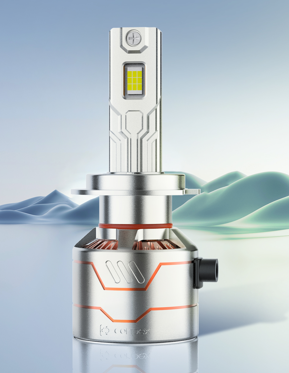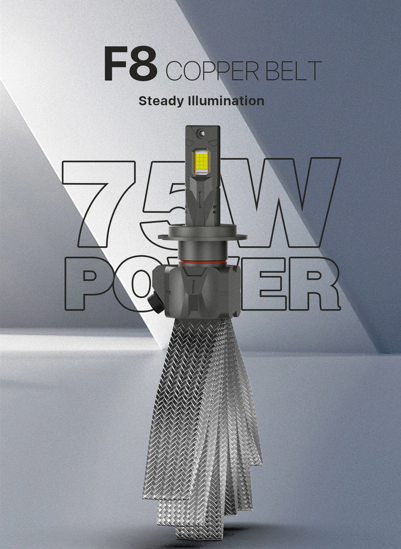Automotive LED Headlight Cooling Systems: Fan vs. Fanless Designs
10 July 2025
by CONPEX
Reading volume: 1614
With the continuous advancement of automotive LED lighting technology, LED headlights have become the standard configuration for modern vehicles due to their high brightness, low energy consumption, and long lifespan. However, in the design of LED lighting fixtures, the cooling system is a key factor in ensuring their long-term stable operation. LED chips generate a significant amount of heat during operation, and if not effectively dissipated, it may affect their performance and lifespan. Therefore, the design of the cooling system is crucial.
In the cooling design of automotive LED headlights, the two common solutions are the fan cooling system and the fanless cooling system. Each design has its own unique characteristics and is suited for different usage scenarios.
1. Fan Cooling System:
The fan cooling system uses an integrated fan to increase air circulation and quickly dissipate the heat generated by the LED chips. The fan is typically located at the rear or bottom of the fixture.
Advantages:
Efficient Cooling: The fan can rapidly dissipate heat, making it ideal for high-power, high-brightness LED headlights, especially in high-temperature environments.
Suitability for High-Power Fixtures: The fan system can handle the heat dissipation requirements of high-power LED chips, ensuring that the headlight's performance is not compromised by overheating.
Compact Design: The fan design can provide strong cooling performance in a limited space, making it suitable for applications where space is constrained.
Disadvantages:
Dust Risk: One of the biggest issues with fan cooling systems is the risk of dust entering the fixture. In dusty environments, the fan may suck in sand particles from the air, causing the fan to operate inefficiently or even become jammed, which can affect cooling performance and shorten the lifespan of the headlight.

2. Fanless Cooling System:
The fanless cooling system relies on natural convection and cooling materials (such as aluminum alloy, copper plates, etc.) to transfer and dissipate heat. By increasing the cooling surface area and using efficient cooling materials, heat can be quickly transferred and carried away by air movement, thus maintaining the stable operating temperature of the fixture.
Advantages:
Durability: Without mechanical parts like a fan, the risk of failure is reduced, making it particularly suitable for long-term stable use.
Energy Efficient: No need for a fan power source, so it does not add extra power consumption, improving overall energy efficiency.
Better Adaptability in Dusty Environments: The fanless design has no moving parts, preventing dust from affecting the interior of the fixture, making it especially suitable for areas with frequent dust storms.
Disadvantages:
Limited Cooling Capacity: Compared to fan systems, fanless cooling systems may not perform as well in high-power LED headlights. Therefore, fanless LED headlights typically do not have very high brightness or power.
Larger Size: To improve cooling efficiency, fanless designs generally require larger cooling surfaces or thicker cooling materials, which may increase the size of the fixture.

Conclusion
When choosing automotive LED headlights, the appropriate cooling system not only affects the performance and lifespan of the fixture but also plays a crucial role in handling harsh environmental conditions. For regions with frequent dust storms, the fanless cooling system is a more ideal choice, ensuring that the LED headlights can continue to function stably even in extreme environments.






